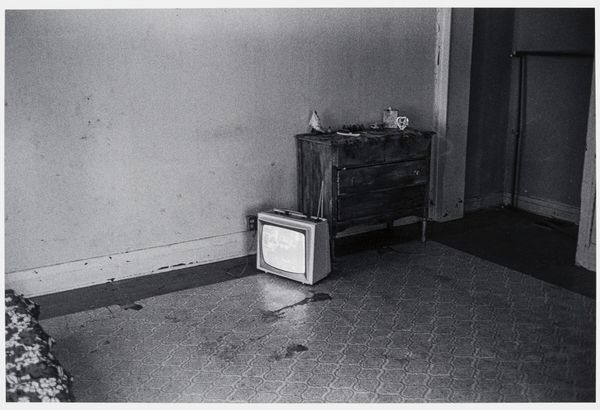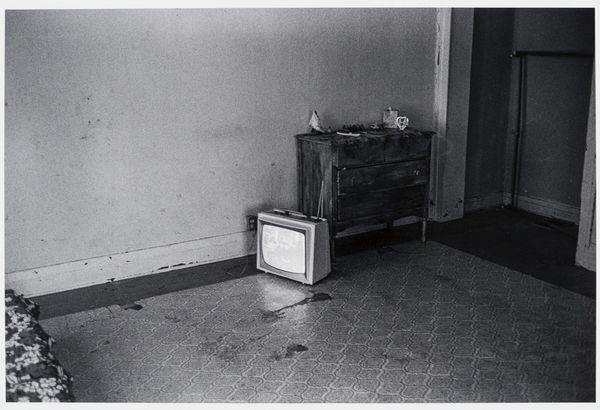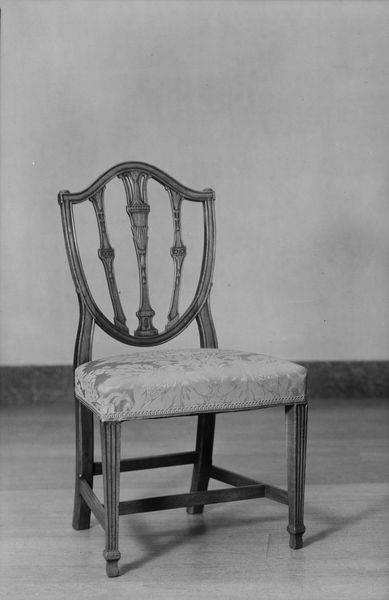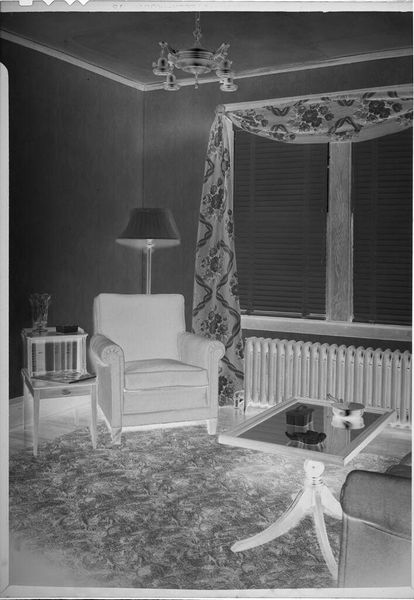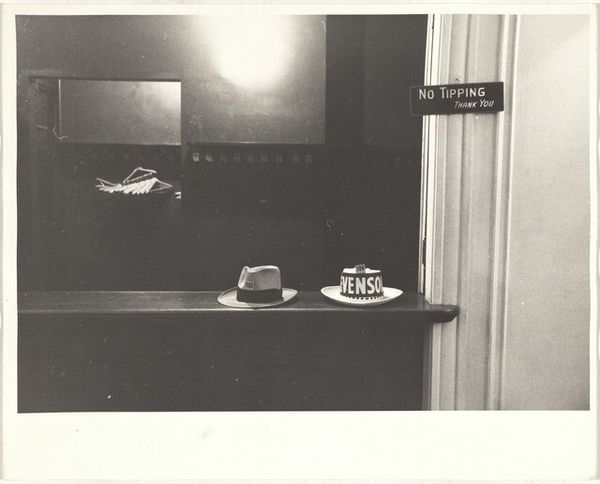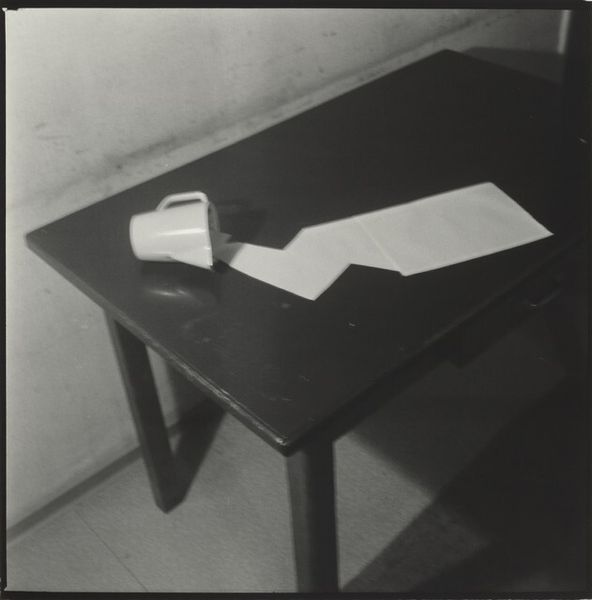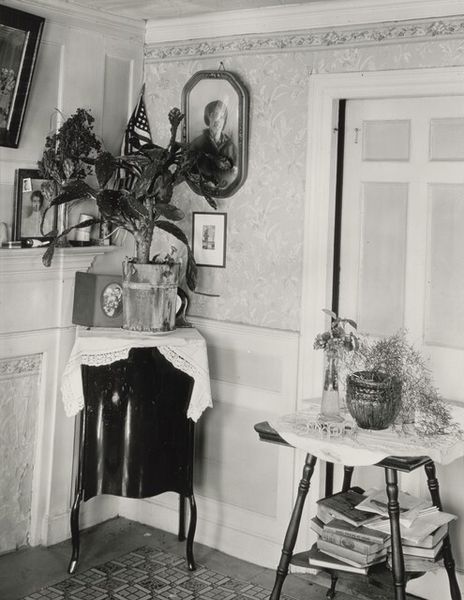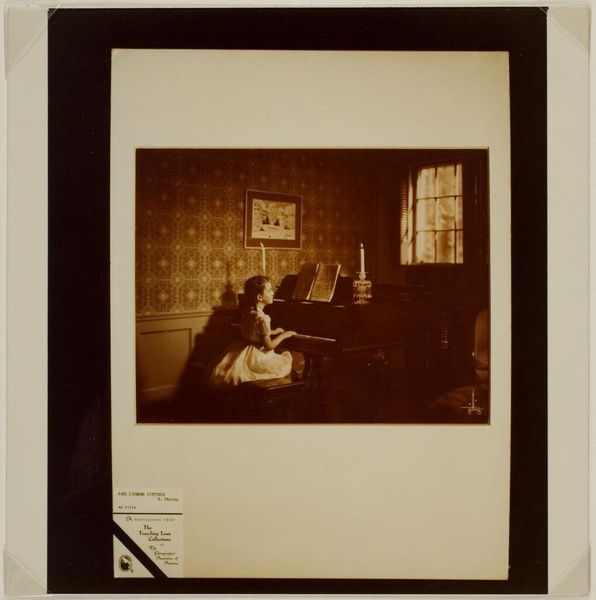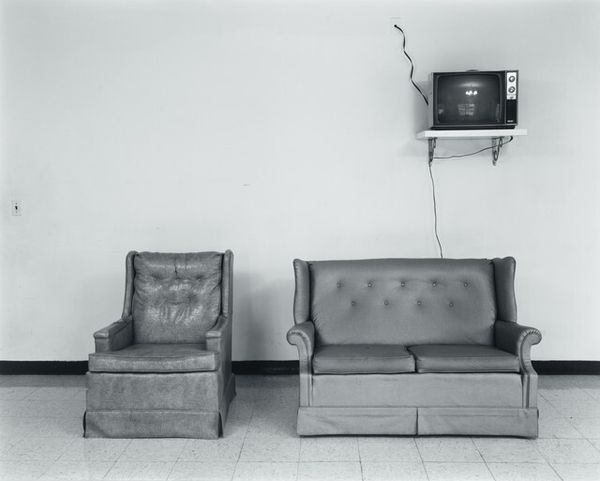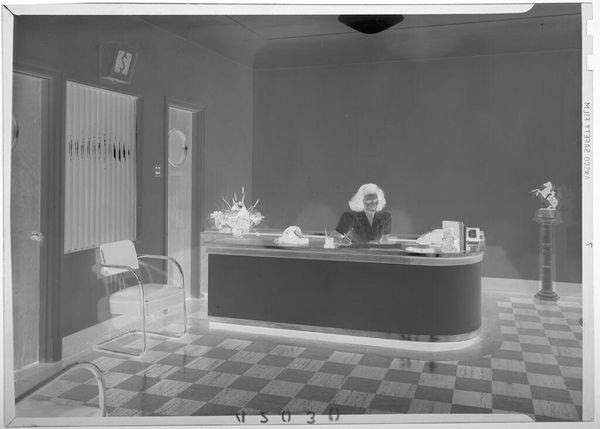
Dimensions: image: 167 x 214 mm
Copyright: CC-BY-NC-ND 4.0 DEED, Photo: Tate
Editor: This is Werner Mantz's "Interior, Cologne 1928," a black and white photograph. It feels so staged, and yet sterile. What do you see in this piece? Curator: I see a commentary on the rise of functionalism in design and its impact on domestic life. The Neue Sachlichkeit movement favored practicality over ornamentation, and this interior reflects that. Notice how the chair, though stylish, is reduced to its essential form. Editor: So it's more than just a chair; it's a statement? Curator: Exactly. The photo, devoid of human presence, speaks to the changing role of the individual within an increasingly industrialized society. The image also prompts us to consider the power of photography in shaping public perception of modernity. What do you make of the painting in the background? Editor: It softens the image, maybe hints at a lingering past? I never would have considered the social impact of furniture! Curator: Indeed. It's a reminder that art reflects and shapes our understanding of the world.
Comments
tate 6 months ago
⋮
http://www.tate.org.uk/art/artworks/mantz-interior-cologne-1928-p79946
Join the conversation
Join millions of artists and users on Artera today and experience the ultimate creative platform.
tate 6 months ago
⋮
Interior, Cologne 1928, printed 1977 is a photograph by Werner Mantz showing a domestic interior scene. A velvet armchair is shown on the right, positioned in the corner of a room that is decorated with light-coloured, textured wallpaper. To the left of the armchair, an abstract painting with a wide frame hangs on the wall, only its lower section visible within the scene. A carpet covers the floor, its soft texture echoing the velvet of the armchair and its varied dark tones contrasting with the much lighter walls. The relative bareness of the room, combined with the angle from which the picture was taken, looking into the corner of the room, gives the image a somewhat claustrophobic feeling. The photograph reveals Mantz’s familiarity with the techniques of still-life photography and its ability to subtly evoke a human presence through the simple depiction of objects within a space.
